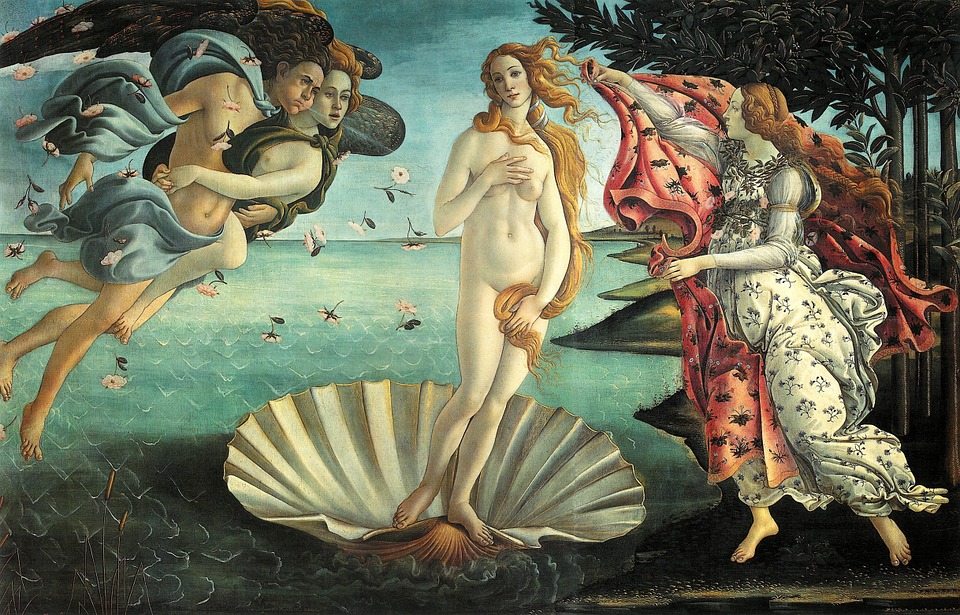The most famous painting of the Renaissance is Leonardo da Vinci’s Mona Lisa (1503 – 1519). He was a great experimenter in various fields – science, art, mechanics, astronomy and more. It is difficult to overestimate the influence of this great Italian artist on the development of world painting.
The main masterpiece that draws millions of tourists to Paris every year is Da Vinci’s Gioconda (aka Mona Lisa), exhibited in the Louvre collection. Her eyes seem to simultaneously gaze at everyone looking at the portrait from anywhere in the picture gallery. It is worth appreciating the mystical quality of the eyes of the beautiful medieval Madonna, with her hypnotic half-smile and her spaghetti-like cleavage. This is her permanent home, the “Hall of the Gioconda” of Museum No. 711.
Who was the model for Leonardo’s masterpiece?
Da Vinci’s painting of the Mona Lisa is also known as the portrait of Madame Lisa del Giocondo. She is said to have been the young wife of a wealthy Florentine. Leonardo’s contemporary claims that it is Lisa Gherardini, a beautiful noble Italian woman, whose image has become the main “jewel” of the Louvre. She was the wife of Francesco del Giocondo, a well-known merchant of expensive fabrics at the time.
Most of our contemporaries do not consider her a beauty. Art historians insist that every era has its own standard of beauty, and the portrait of Gioconda is one of them. But why is this beauty without eyebrows? Today, that would be considered a serious flaw. Some argue that Renaissance eyebrows were shaved off to reveal a beautiful wide forehead. Others insist that the restorers “messed up”.
One can argue about the standards of beauty, but this image has been stirring the imagination of viewers for 5 centuries. And Leonardo da Vinci himself could not part with “Gioconda”. Even on his deathbed visitors found a portrait of Mona Lisa beside the great master. However, no one can say with absolute certainty whether it was the original or another copy of the famous masterpiece. Until our days there are only two paintings, one in a private collection, the other in the Louvre.
Either way, no one could deny that Leonardo da Vinci’s Mona Lisa depicts the same Lisa Gherardini from Florence. The Ritratto di Monna Lisa del Giocondo is the name given to this painting in the registers of the museum. None of the great artist’s pupils has ever been able to replicate that enigmatic shadow of a smile from the Portrait of Miss Lisa del Giocondo.
The mysteries of the “Mona Lisa.”
No one knows what pictorial means were used in the early 16th century, but it seems that the entire Louvre is illuminated by the radiant light of the confident Italian Lise del Giocondo by the brush of the great Leonardo. Perhaps when the portrait was completed, it was even better – the colors had not had time to fade and crack from time.
One thing is clear, the face appears spherical, like a holographic or digitally processed image. The technology of our time was not yet known in those days, and the Ritratto di Monna Lisa del Giocondo is the most famous painting in the world, unmistakably recognizable even to children.
The eyes of the silk merchant’s wife have been watching everything simultaneously for five centuries. It seems that the lady sitting in the chair is about to wink at one of the many visitors to the Louvre, so vivid seems the portrait of Gioconda.
We know for a fact that Leonardo experimented with a new portrait manner, so that the faces on the canvases were not flat, like on cheap paintings. This secret he never revealed to anyone, but we know that he worked in the technique of shading light, blurring the sharp boundaries of outlines. Today Da Vinci’s work is the most visited exhibit in the Louvre’s museum collection, where admission costs at least 17 euros today.
